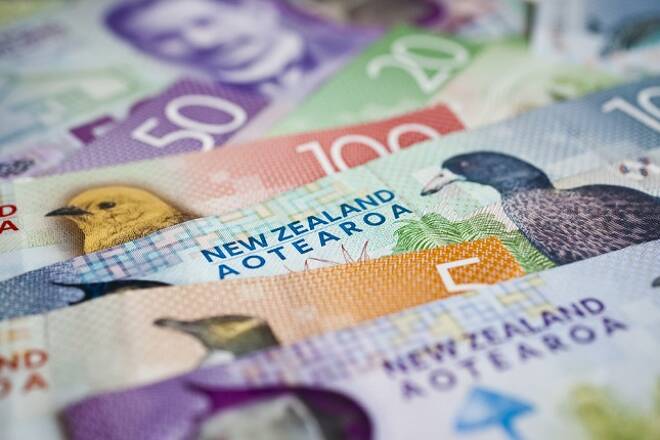Advertisement
Advertisement
AUD/USD and NZD/USD Fundamental Weekly Forecast – Will RBNZ Signal Rate Cut?
By:
This week, the AUD/USD and the NZD/USD will be largely influenced by the direction of U.S. Treasury yields. Domestically, news from New Zealand will dominate the trade. Ahead of the RBNZ announcements, the markets have now almost fully priced (over 90% probability) for one full interest rate cut by August and an 80% chance of two cuts by April 2020.
The Australian and New Zealand Dollars finished mixed last week with the Aussie settling marginally lower and the Kiwi posting a modest gain. Both currencies were influenced by a combination of domestic economic activity and a major change in U.S. Federal Reserve policy. The Aussie and Kiwi also posted volatile two-sided price swing in reaction to these events.
For the week, the AUD/USD settled at .7081, down 0.0006 or -0.08% and the NZD/USD closed at .6875, up 0.0029 or +0.42%.
Australian Dollar
Pressuring the Australian Dollar early in the week was the Reserve Bank of Australia’s monetary policy meeting minutes, which indicated the central bank will continue to hold interest rates steady, even as a slide in the nation’s home prices deepens, as it awaits a resolution to the divergence between strong hiring and decelerating economic growth.
The RBA said the labor market is “particularly important” to the outlook and reiterated there’s considerable uncertainty over consumption. It also said dwelling investment was expected to subtract from growth and the decline “could be sharper” than currently expected.
“Members agreed that there was not a strong case for near-term adjustment in monetary policy,” the RBA said. “Rather, they assessed that it would be appropriate to hold the cash rate steady while new information became available that could help resolve the current tensions in the domestic economic data.”
New Zealand Dollar
The New Zealand Dollar posted a so-so reaction to the news that New Zealand’s gross domestic product (GDP) grew 0.6 percent over the year in the December 2018 quarter, Statistics New Zealand figures showed on March 21. The quarterly result was in line with market expectations but below the Reserve Bank’s latest forecast of a 0.8 percent gain.
The GDP figures confirmed that the economy lost some momentum over the second half of last year, but not to the extent that may experts thought.
Fed Recap
A dovish Federal Reserve helped drive the Aussie and Kiwi higher into the close on Friday.
On March 20, the U.S. Federal Reserve left its key interest rate unchanged while projecting no rate hikes in 2019, dramatically underscoring its plan to be “patient” about any further increases. Central bank policymakers also pared its forecast of U.S. economic growth this year to 2.1 percent, down from its previous projection of 2.3 percent and the roughly 3 percent pace of expansion in 2018.
“We foresee some weakening, but we don’t see a recession,” Federal Reserve Chairman Jerome Powell said in a press conference. It its policy statement, the Fed said that the job market remains “strong” but noted that “growth of economic activity has slowed” since late 2018.
The Fed also announced it will stop reducing its bond portfolio in September, a step that would help hold down long-term interest rates.
Weekly Forecast
This week, the AUD/USD and the NZD/USD will be largely influenced by the direction of U.S. Treasury yields. Domestically, news from New Zealand will dominate the trade.
Plunging U.S. Treasury yields should weaken the U.S. Dollar, which should underpin the Aussie and Kiwi. However, the main driver of the New Zealand Dollar is likely to be the Reserve Bank of New Zealand’s interest rate decision and Rate Statement. A hawkish RBNZ should be supportive for the NZD/USD.
Ahead of the RBNZ announcements, the markets have now almost fully priced (over 90% probability) for one full interest rate cut by August and an 80% chance of two cuts by April 2020.
About the Author
James Hyerczykauthor
James is a Florida-based technical analyst, market researcher, educator and trader with 35+ years of experience. He is an expert in the area of patterns, price and time analysis as it applies to futures, Forex, and stocks.
Did you find this article useful?
Latest news and analysis
Advertisement
